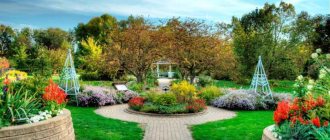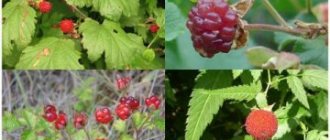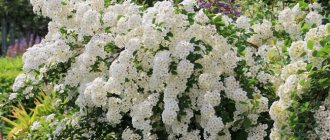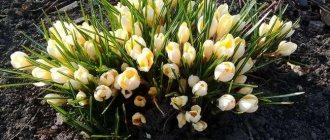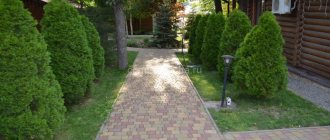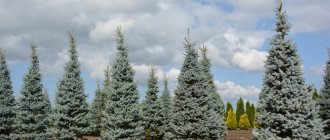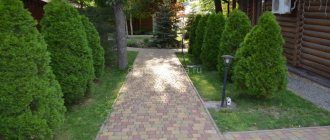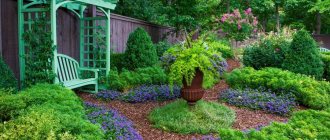A dacha plot with waterlogged or too damp soil is not yet a reason to install a powerful drainage system. In order not to disturb the natural landscape, it is enough to choose plants for planting that can easily tolerate such growing conditions. Among the moisture-loving crops there are perennials and annuals, decorative foliage and flowering ones. The most suitable are those that can decorate the site for many years. They are a group of plants that naturally grow in swamps, shallow waters, and near reservoirs, but can also be grown culturally, and, therefore, become an ideal choice for dachas where the land is waterlogged.
Selection of suitable plants
There are no ideal summer cottages. On some there is increased dryness or excess moisture, on others there are unusual soil features, on others there are elevation changes, on others groundwater lies near the surface. If the soil on the site is swampy or too damp, it is quite possible to do without powerful drainage. To preserve the natural landscape, you need to plant suitable plants on it. Moisture-loving trees and shrubs delight the eye with luxurious foliage and lush flowering. Experts who professionally engage in landscape design say that there are simply no bad areas for them. No matter what features the site has, it always provides rich opportunities for the implementation of the most daring plans. It is only important to choose an option that meets specific conditions. In waterlogged areas, you can create a “wet garden” by planting trees and shrubs that can tolerate a lack of oxygen in the soil.
Crops for areas with high humidity
Moisture-loving plants are divided into two classes:
- beautifully flowering with attractive leaves;
- deciduous and decorative with inconspicuous flowering.
There are lovers of damp soil among both annual and perennial plants. Most of these crops belong to the group of trees and shrubs (for example, viburnum, serviceberry, hydrangea) or to the herbaceous class of perennial plants that can live in one place for several decades. Such varieties grow naturally in shallow waters, swamps, and water bodies. They are also perfect for artificial plantings in summer cottages.
Moisture-loving shrubs and trees have the ability to drain the soil around them. To eliminate excess moisture in a summer cottage, you can plant a birch tree, which, after reaching maturity, drains the soil within a radius of about 10 meters. Moisture-loving trees also include elderberry, maple, and willow. Examples of moisture-loving shrubs are silver currant, viburnum, cranberry, etc. Fruit-bearing bushes can be planted in a small summer cottage with high soil moisture. However, it must be taken into account that even moisture-loving plants do not bear fruit in overly swampy and damp soil.
Mint
Mint is also decorative, healthy and all its types like moist soils. In nature, mint grows near bodies of water, so in the garden it is best to plant it in partial shade or shade. Mint can be used as part of medicinal and ornamental plantings.
Thus, longleaf mint has characteristic silvery leaves and elongated purple inflorescences, and grows up to 1 m in height.
Swamp Rose
Swamp rose is an erect, spreading bush up to two meters high. It constantly produces young shoots and grows quickly. This shrub is also known as Pennsylvania rose. It comes from North America. It lives on the shores of reservoirs and in wetlands, as well as in ravines. Prefers partial shade and bright sunlight. The purple-reddish shoots have many thorns, and the edges of the pubescent dark foliage have teeth. The appearance of a picturesque openwork crown is complemented by inflorescences of several small flowers. The bush emits a pleasant aroma. During the summer, the color changes from pink to bright orange. Flowering occurs in July-August.
Swamp rose requires constant care, including timely removal of young shoots and annual pruning of old branches. This crop is suitable for creating a spectacular accent. It stands out brightly against the background of decorative foliage plants.
Tall perennials
Giants from this group can reach a height of up to 200 cm. These are aruncus, buzulniki (Przhevalsky, Wich, narrow-leaved, palmate, serrated), delphinium, daylilies, branched cohosh.
Arunkus vulgaris (volzhanka)
Belongs to the Rosaceae family. The leaves are large, petiolate, bipinnate. Inflorescences are a complex panicle formed by white or cream small flowers. Flowering time is June.
Volzhanka can be advantageously camouflaged for buildings, fences, and can be used to create areas under the canopy of sparsely planted trees.
Among the tall ones, it is worth special mentioning the shade-loving flowers for the garden, blooming all summer:
Black cohosh (black cohosh)
Belongs to the Buttercup family. It is distinguished by very beautiful, dissected leaves and characteristic snake-like writhing inflorescences of small whitish flowers, which open gradually, starting from the bottom. Black cohosh blooms from June to autumn. It is propagated by dividing the bush, cuttings, and seeds.
Black cohosh inflorescences emit a not very pleasant smell, apparently this is where the name of the plant comes from
Buzulnik
The genus Buzulnik of the Astrov family includes about 150 species. They reproduce by seeds and division of the bush. They love watering and fertile soil.
Buzulnik serrated is a powerful herbaceous perennial with oval-round leaves. Yellow flowers are collected in baskets, up to 10 cm in diameter. The baskets form complex umbrellas.
Buzulnik serrated blooms all summer; varieties with unusual foliage colors look especially impressive.
Przhevalsky's buzulnik is distinguished by red-brown stems and openwork leaves dissected along the edges. The inflorescences are paniculate, resembling candles. Flowering occurs in June – July.
Having taken a strong position in the gardens of central Russia, Przhevalsky's buzulnik is found in wild flora in the Urals and China.
Meadowsweet
Under natural conditions, meadowsweet, also called meadowsweet, grows in flooded meadows and swampy forests. In a cultivated area it requires approximately the same conditions. In June, the meadowsweet blooms into white lush laces. Although in other months this plant looks modest, its hardiness and beauty have made it very popular among gardeners.
The most common varieties are those with white flowers, but there are also varieties with pink flowers. The feathery leaves form a majestic backdrop for the paniculate and corymbose inflorescences. Most of all, gardeners value meadowsweet and Korean meadowsweet, from whose pink buds white flowers bloom. Withered inflorescences should be cut off, and the bushes should be divided and replanted every 5-6 years.
Meadowsweet is planted on the banks of natural and artificial reservoirs, in landscape areas, and on forest edges. It loves sunlight, but easily adapts to partial shade. Watering is required only when the soil dries out.
Buzulnik
Buzulnik will delight you with beautiful leaves (purple on the underside) and decorative yellow-orange flowers. Blooms in summer and until late autumn. Loves places in partial shade and even shade, and also needs constantly moist soil. It can even grow on the banks of water bodies.
This magnificent plant grows up to 1-1.5m in height and the leaves form large, spreading clumps, so it needs to be given plenty of space when planting. Overwinters without problems.
Kaluzhnitsa
Marigold is also known by the names "water snake" and "paddling pool", which reflects the penchant of this beautifully flowering perennial plant for damp, marshy areas. Dense, almost round leaves with a diameter of up to 12 centimeters grow on the branched stems of this crop. Attractive golden inflorescences that bloom in April-May give the plant a special charm. Marigold is used to create a spot of color in the foreground of the garden, to decorate a wet flower bed. The most popular among gardeners are the horned marigold, the multi-petalled marigold with golden flowers, and the marsh marigold.
In case of excessive growth, division of marigold is carried out every 3-4 years. This crop needs a lot of sun, but it can do with partial shade under trees with a not too dense crown.
Basilisk
Various types of cornflower love moist soil, so they can be planted near bodies of water, preferably in partial shade.
The plant has delicate feathery flowers in pink, purple, as well as white and yellow. On sale you can find several species that differ in color, shape and size of leaves, although they are all quite large plants (from 1 to 2 m in height).
Swamp spurge
The Euphorbiaceae family includes herbaceous plants, subshrubs, shrubs and trees. Swamp spurge stands out among them for its love of dampness. Under natural conditions, it grows in water meadows; in the garden it can tolerate short-term flooding. In landscape design, this crop is used to form a background for other plantings, create a textural accent, and is used to decorate ponds and decorate wet flower beds.
This perennial plant with a large cylindrical rhizome is characterized by unpretentiousness, but at the same time it is aggressive and toxic. Bare bluish shoots are decorated with narrow bright foliage. The inflorescences located on top have an inconspicuous appearance. After flowering is completed, pruning is performed to thicken the clumps. Once every 3-4 years, swamp spurge is rejuvenated by completely removing the above-ground part. For normal development of this crop, moist soil and a lot of light are required. For tall varieties you need to install supports.
Chrysanthemums
Plants that can grow in moist soil also include chrysanthemums. It is an attractive perennial with a huge variety of varieties and flowers ranging from dark red to white.
Grows well in partial shade and light, provided the soil is constantly moist. However, it should be remembered that although the soil for chrysanthemums should be moist, it should also be fertile and permeable (water should not stand near the roots).
MOST READ FROM PARTNERS
Loosestrife
Loosestrife is a perennial plant with straight shoots that form clumps 70-80 centimeters high. This culture is shade-tolerant, but loves sunlight, in which it quickly grows into a large bush, or more precisely, into a clump. Loosestrife tolerates harsh winters well and does not need shelter during the cold season. It has a powerful but shallow root system that tends to cover a large area. For this reason, to preserve the beauty of the flower garden, it is necessary to regularly remove excess parts of the bush. When growing creeping varieties, it is necessary to control their growth; when growing erect varieties, remove the inflorescences and hill them up.
The best conditions for growing loosestrife are moderately humid, although it does well in waterlogged areas. Loosestrife blooms from May to August. At this time, white, pale yellow or pink inflorescences bloom. After flowering is completed, the faded parts are cut off, due to which re-blooming begins, which is more abundant.
Astilbe
A beautiful and colorful perennial that blooms for a long time and has a fairly compact size. The plant is grown in many gardens and not necessarily in wetlands.
However, in summer it requires regular and intensive watering, because during drought, growth may slow down and flowering may stop.
It is best to plant astilbe in moist and semi-shaded places. The soil, although moist, must be permeable, fertile and humus, which will give more abundant and vibrant flowering.
Thyroid darmera
Thyroid darmera is a herbaceous perennial plant with huge leaves. It tolerates cold well in winter. Darmera does not shoot underground shoots; the bush grows evenly. The knobby, powerful, thick rhizome of the plant has a diameter of 6 centimeters.
With the help of this crop, the coasts of reservoirs and large wetlands are decorated; it is used for arranging damp flower beds. Green leaves with veins and grooves are perfect for this purpose. Throughout the season, streaks and purple spots appear on them. Flowering occurs in April-May, before the leaves appear. The beauty of delicate pink flowers is emphasized by unusual purple stems. The best soil for dharmera is one with variable levels of swampiness. She doesn't really like sunlight and prefers partial shade. If the bush grows excessively, it is divided. It is recommended to trim the flower stalks. Fertilizing is done every spring. The most common variety “Nanum” has a height of up to 50 centimeters.
What kind of shadow is there?
We will help you figure out what degree of shading is in a particular place on your garden plot:
Shadow
Shady areas are considered to be places where direct sunlight hits for 2 - 3 hours a day.
Penumbra
These are areas where the sun's rays fall 3 - 4 hours a day. This happens either in the morning at sunrise or in the evening at sunset. Such a shadow is formed from the wall of a house or a fence; accordingly, shady and sunny areas will alternate.
Scattered Shadow
Such a shadow is formed when sunlight passes through the crowns of trees. Areas with diffuse shade are favorable for growing many plants.
deep shadow
There are places where sunlight does not reach, this may be due to the certain architecture of your garden area. Sunlight does not reach this place due to the placement of buildings on your plot.
Swamp calamus
Under natural conditions, marsh calamus grows near lakes, rivers and swamps. Gardeners also plant it in their summer cottages. This hardy plant has long, bright green leaves with frilled edges. It looks great in wetlands. Calamus loves sunny open areas with fertile, silty, floodable soil. It requires early flowering neighbors who close the clumps in early summer. This crop needs to be constantly weeded; if it grows excessively, the clumps must be separated. The most popular variety at present is not the marsh calamus, but the garden variety of this plant with white and cream stripes, called “Variegata”. Its striking coloring and relatively low height form a pleasant background and make a strong impression thanks to its unusual appearance.
Himalayan honeysuckle
A moisture-loving and unpretentious shrub. The plant does not require any special care. It is quite easy to grow. The culture has arched branches, against the green background of which the purple inflorescences look quite impressive. Himalayan honeysuckle looks best against the background of white turf and near ponds, in the surface of which the shoots of bushes are reflected.
General recommendations for moisture-loving trees and shrubs
Moisture-loving shrubs and trees grow best in soil rich in nutrients. Therefore, to create favorable conditions for them, the acidity of the soil should be reduced and a nutrient substrate should be added to it. In addition, such an area must be constantly monitored, preventing the soil from drying out. This is especially true in the summer months, when it does not rain too often. Although many moisture-loving plants can tolerate short-term droughts, it is advisable to provide them with water in a timely manner. The best conditions for them can be provided on a well-lit coast of a reservoir. They can be planted on the borders of a summer cottage on the side of a pond or lake as a hedge. Willow and alder have decorative properties throughout the year due to the noble pattern of the bark. In different types of willow, the bark also has different colors.
In areas where the soil remains wet for a long time, plants should not be planted in late autumn, since the soil in such areas quickly freezes at this time. It is best to plant them in spring or early summer, when the soil is warm enough.
Loosestrife
Merlin grows wild and is quite common in Russia, but it can also be grown as an ornamental plant.
It has characteristic long inflorescences with pink or carmine flowers that bloom all summer. Can grow in sun or partial shade and does especially well around bodies of water.
Frost-resistant and undemanding. It is also worth saying that loosestrife is not only a honey plant, but also a medicinal plant. And in addition to wild species, decorative varieties with more spectacular inflorescences have also been bred.
MOST READ FROM PARTNERS
